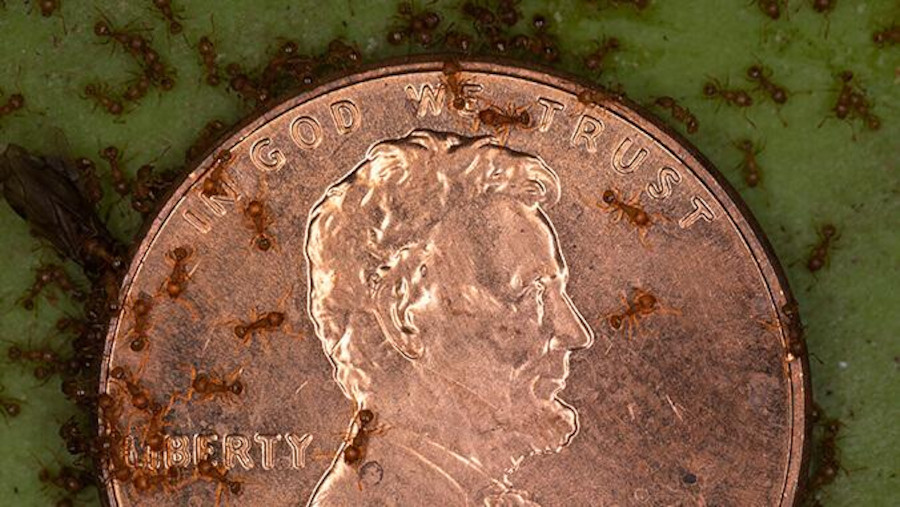This story appears in the above BIVN Update. The video will jump to the associated story when played. (A synthesized voice was utilized in the narration for this story)
(BIVN) – The effort to rid Hawaiʻi island of the little fire ant has mostly been abandoned. However, with a new treatment technique having success on Maui, perhaps the fight on the Big Island is not over yet.
Little fire ants in Nāhiku, Maui are nearly eradicated, the University of Hawaiʻi at Mānoa reports, after more than 3 years of treatments.
The Maui Invasive Species Committee manger called the Maui news a “victory for us, but also the rest of the State.”
From the UH-Mānoa news release:
Although undersized, little fire ants have had a massive impact in Hawaiʻi, from stinging residents and blinding pets to displacing other insects and animals and leaving agricultural land unusable. In Nāhiku, Maui, the fire ants have invaded 175 acres of land, the largest known infestation in the state. A team from the University of Hawaiʻi at Mānoa has developed a strategy to manage, and possibly eradicate the little fire ants.
After the Nāhiku infestation was discovered in 2014, the Maui Invasive Species Committee (MISC) in the UH Mānoa Pacific Cooperative Studies Unit partnered with the Hilo-based Hawaiʻi Ant Lab (HAL) and the Hawaiʻi Department of Agriculture. MISC used an ant control technique developed by HAL that relies on an insect growth regulator combined with a beef liver bait that is highly attractive to little fire ants, but not other insects. Due to an intermittent stream found in Nāhiku, HAL and MISC also ensured that the mixture would be safe for use around waterways, as well as humans and animals.
The mixture is the consistency of pancake batter, appropriate for use in the pumps and spray equipment that are attached to the helicopter that distributes the little fire ant treatments. Additionally, the consistency causes the mixture to stick on the leaves of trees and shrubs long enough for worker ants to find and deliver it to the queen to prevent her from laying eggs. After regular treatments, she and her colony die out.
After more than three years and 24 treatments, annual surveys of the Nāhiku infestation show the little fire ants have been nearly eradicated.
“We’ve reached a milestone in our efforts to get rid of the ants in Nāhiku,” said Brooke Mahnken, MISC’s lead on Maui fire ant eradication efforts. “We didn’t find any fire ants in our last survey. This means we’re in a monitoring phase. While there’s a chance they may turn up during future surveys, we’ve reached the point on the journey where eradication is in sight.”
“Having an effective product and a way to get it into the trees was a turning point for the State,” added Interim MISC Manager Teya Penniman. “[The Nāhiku success story is a] victory for us, but also the rest of the State. We have a proof of concept that it’s possible to eliminate large infestations of little fire ants in some of the most extreme habitats.”
Stop the Ant month
A team of more than 30 people from MISC will be joined by staff from other conservation organizations throughout October in honor of “Stop the Ant” month as they search for any straggler ants. Surveys will continue for several years.
“If we find little fire ants on our next survey, we know we can knock out these small populations with the tools we’ve developed,” said Mahnken. “If repeat surveys over the course of five years yield no ants, we will declare the site eradicated.”
During Stop the Ant month, Hawaiʻi residents are encouraged to collect and submit ants from their properties to help detect and control the spread of the little fire ants and other harmful pest ants that may be new to the state. Instructions and more information to report the ants can be found online.


by Big Island Video News5:54 pm
on at
STORY SUMMARY
HAWAIʻI - Officials say the near-eradication of LFA in Nāhiku is a "proof of concept that it’s possible to eliminate large infestations" in the most extreme habitats.